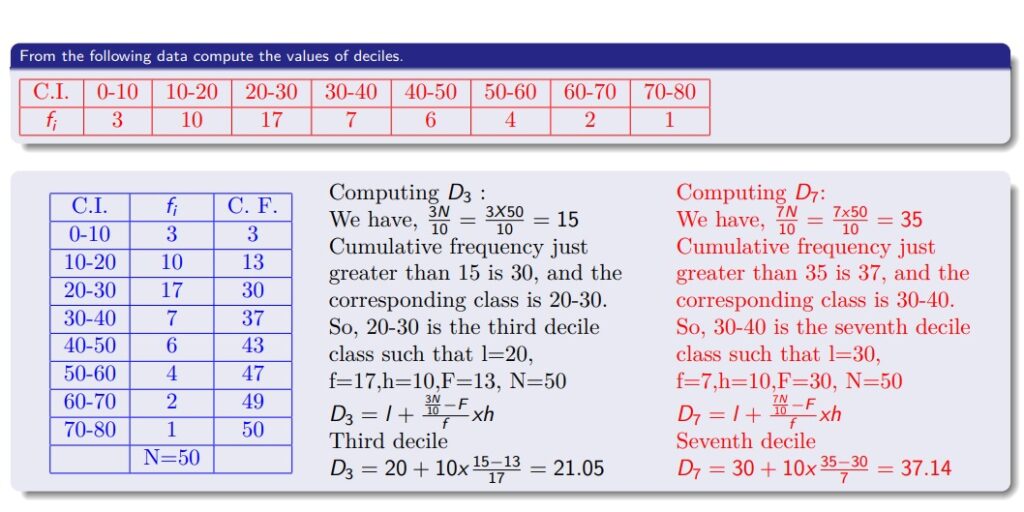Computing Deciles from Frequency Distribution
From the following data, we compute the values of the deciles:
Class Intervals and Frequencies
| Class Interval (C.I.) | Frequency (fi) |
|---|---|
| 0-10 | 3 |
| 10-20 | 10 |
| 20-30 | 17 |
| 30-40 | 7 |
| 40-50 | 6 |
| 50-60 | 4 |
| 60-70 | 2 |
| 70-80 | 1 |
| Total N = 50 | |
Cumulative Frequency
| Class Interval (C.I.) | Frequency (fi) | Cumulative Frequency (C.F.) |
|---|---|---|
| 0-10 | 3 | 3 |
| 10-20 | 10 | 13 |
| 20-30 | 17 | 30 |
| 30-40 | 7 | 37 |
| 40-50 | 6 | 43 |
| 50-60 | 4 | 47 |
| 60-70 | 2 | 49 |
| 70-80 | 1 | 50 |
Decile Computations
Computing D3
We have,
D3 = 3N⁄10 = 3 × 50⁄10 = 15
Cumulative frequency just greater than 15 is 30, and the corresponding class is 20-30.
So, 20-30 is the third decile class such that:
l = 20, f = 17, h = 10, F = 13, N = 50
Applying the formula:
D3 = l + 3N/10 – F⁄f × h
= 20 + 15 – 13⁄17 × 10
= 20 + 1.18 = 21.05
Third Decile (D3) = 21.05
Computing D7
We have,
D7 = 7N⁄10 = 7 × 50⁄10 = 35
Cumulative frequency just greater than 35 is 37, and the corresponding class is 30-40.
So, 30-40 is the seventh decile class such that:
l = 30, f = 7, h = 10, F = 30, N = 50
Applying the formula:
D7 = l + 7N/10 – F⁄f × h
= 30 + 35 – 30⁄7 × 10
= 30 + 7.14 = 37.14
Seventh Decile (D7) = 37.14
